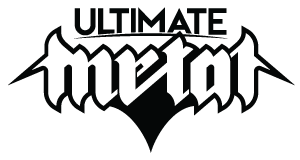Posting in the the distorted bass thread I got this idea.
So we're all talking about the "how to get it right" stuff. Clean low end, crushing guitars with defined midrange, wide vocals etc. Those toolbox recipes are really great. But some thinking outside of the box (not talking computers ) will get our production techniques even more creative, more individual and (very important) more fun!
) will get our production techniques even more creative, more individual and (very important) more fun!
So here's the deal: Share some of your more unusual applications for effects! They may be hardware or software. Guitar stomps on snares, phase inverted gates etc. What do you use in places, you won't learn about in books or universities?
I'll start of with two of my own:
1.) Use a binaural simulator on bass guitar. There are certain plugins that try to mimic a studio monitor enviroment when mixing on headphones. E.g. 112dB Redline Monitor, JB Isone Pro and the oldschool Crossfeed EQ. Taking a twist on these toys, they may help you creating more depth in your sound. They use things like room simulation (verb), freequency tweakings, x-cancelation and what not. These Elements can add dimension and width to single tracks (especially mono).
I found this to be especially helpful if my bass tracks won't "sit" in the mix. As mentioned in the other thread I'm in love with Steinbergs classic Externalizer for this application. Also I'd never touch it for other reasons, it does something really vibey to the spectrum of bass guitars.
2.) Transient design high-gain guitars (Leichtmetall Guitars). I love this technique and I know of some clients who are now using it on a regular basis. So I'm cocky enough to name it "Leichtmetall Guitars" (after my studio). Most of us will be recording a guitar DI track along with any amp-sounds for reasons of editing and reamping. This comes in handy if you like A LOT of distortion but still want some impact and articulation. Here's how it goes:
a) CRANK the gain on your amp.
b) Send the microphone signal to the first track of a SPL Transient Designer.
c) Send the DI signal to the second track, push the link button and add transients to taste.
The link function of the TD is basicly a sidechain - and because your DI signal is very percussive, the Transient Designer has an easy job finding and enhancing those attacks on the non-dynamic distorted guitar.
You can mimic this quite neatly with Sleepytimes amazing freeware plugin Transient.
Have fun and share your ideas!
So we're all talking about the "how to get it right" stuff. Clean low end, crushing guitars with defined midrange, wide vocals etc. Those toolbox recipes are really great. But some thinking outside of the box (not talking computers
So here's the deal: Share some of your more unusual applications for effects! They may be hardware or software. Guitar stomps on snares, phase inverted gates etc. What do you use in places, you won't learn about in books or universities?
I'll start of with two of my own:
1.) Use a binaural simulator on bass guitar. There are certain plugins that try to mimic a studio monitor enviroment when mixing on headphones. E.g. 112dB Redline Monitor, JB Isone Pro and the oldschool Crossfeed EQ. Taking a twist on these toys, they may help you creating more depth in your sound. They use things like room simulation (verb), freequency tweakings, x-cancelation and what not. These Elements can add dimension and width to single tracks (especially mono).
I found this to be especially helpful if my bass tracks won't "sit" in the mix. As mentioned in the other thread I'm in love with Steinbergs classic Externalizer for this application. Also I'd never touch it for other reasons, it does something really vibey to the spectrum of bass guitars.
2.) Transient design high-gain guitars (Leichtmetall Guitars). I love this technique and I know of some clients who are now using it on a regular basis. So I'm cocky enough to name it "Leichtmetall Guitars" (after my studio). Most of us will be recording a guitar DI track along with any amp-sounds for reasons of editing and reamping. This comes in handy if you like A LOT of distortion but still want some impact and articulation. Here's how it goes:
a) CRANK the gain on your amp.
b) Send the microphone signal to the first track of a SPL Transient Designer.
c) Send the DI signal to the second track, push the link button and add transients to taste.
The link function of the TD is basicly a sidechain - and because your DI signal is very percussive, the Transient Designer has an easy job finding and enhancing those attacks on the non-dynamic distorted guitar.
You can mimic this quite neatly with Sleepytimes amazing freeware plugin Transient.
Have fun and share your ideas!
Last edited:

